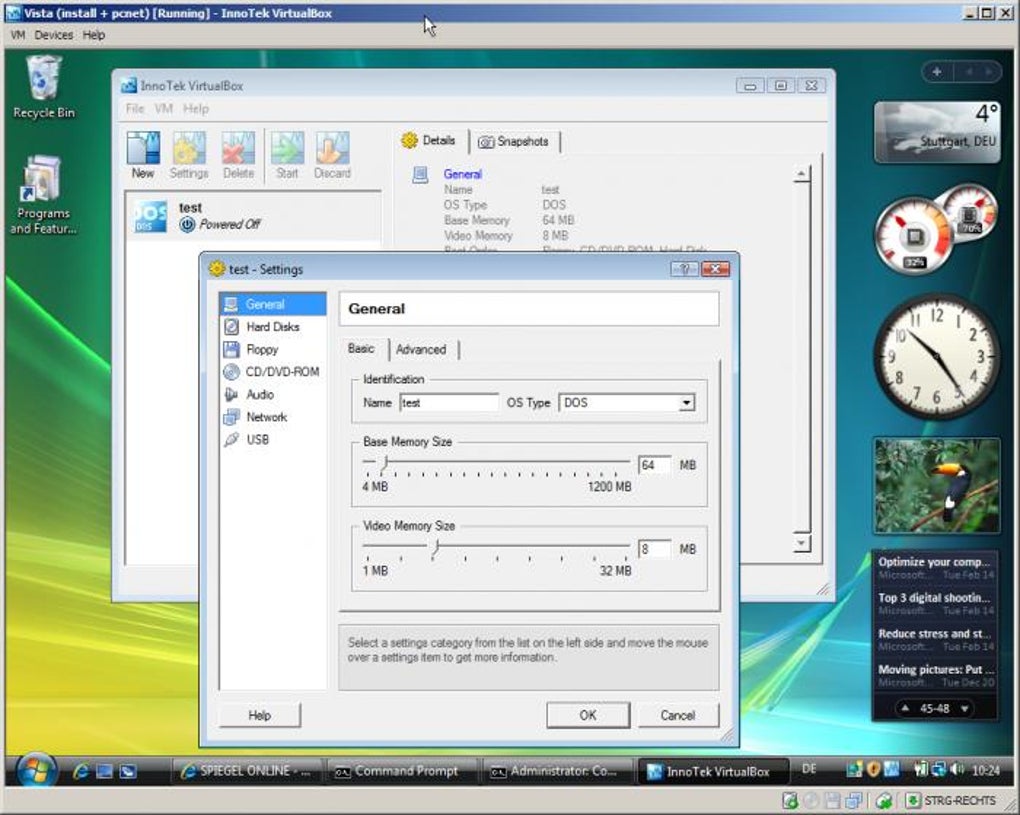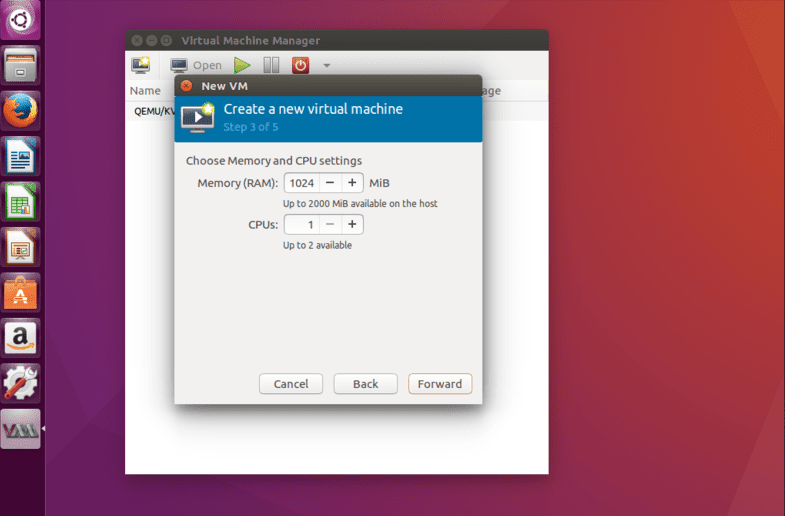

Additionally, the -no-shutdown and -no-reboot options can be used. In order to help track down the source of a triple fault, the -d int option can be used to show additional debugging information on interrupts that occur. This is particularly useful for debugging purposes. The -serial stdio argument used above instructs QEMU to redirect the serial input and output to the host system's stdio stream.

If more than one drive in is required in the guest system, it is possible to use the -boot option to define the order in which the system will check for bootable media. In this case the created drive is a CDROM drive, with myos.iso as its loaded media. The -drive format=raw,media=cdrom,file=myos.iso argument instructs QEMU to create a drive in our guest system.

The -m 128 argument instructs QEMU to create the guest system with 128MB of RAM. When running QEMU on a non-UNIX system, it may be necessary to use the -L command-line option to instruct QEMU where to find a BIOS image. drive format=raw, media=cdrom, file=myos.iso \ An example usage of QEMU can be seen below: QEMU does not require the use of a configuration script like Bochs. VBE support be checked by typing ' vbeprobe' on the GRUB command-line. Refer to the GDB-Stub section below for more information. QEMU can be attached to GDB/ DDD to debug the guest operating-system. This makes it faster than the popular alternative emulator Bochs. Uses 'just in time' code compilation technique (allowing reuse of previous interpretation).Two operating modes: full system emulation (of interest for operating-system development) and Linux user process emulation (of interests to people who want to emulate applications).Supports multiple hosts, multiple targets.


 0 kommentar(er)
0 kommentar(er)
